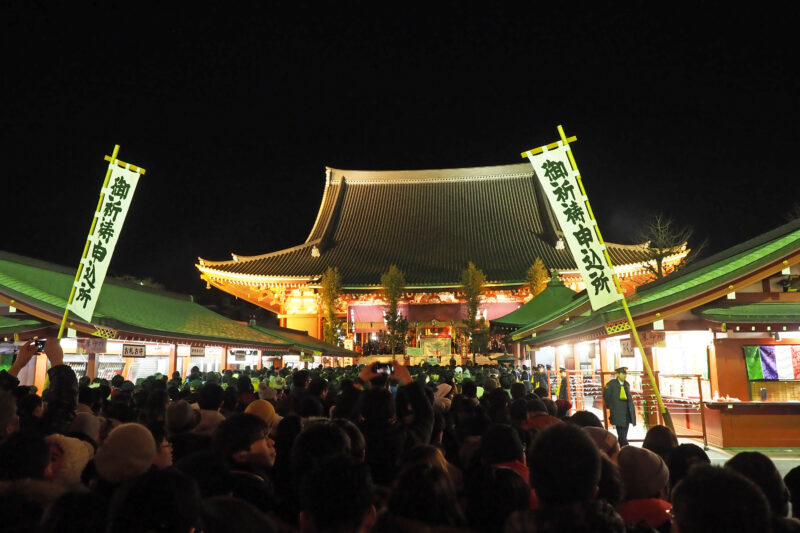Tokyo’s Asakusa is a district where history and traditional downtown culture blend beautifully, attracting visitors from across Japan and around the world. During the New Year season, the area—centered around the famous Senso-ji Temple—comes alive with age-old customs, offering a rare chance to experience Japan’s year-end traditions firsthand.
This guide introduces some of Asakusa’s most memorable year-end experiences, from the atmosphere at Senso-ji in December to the vibrant Hagoita Market and more.
The Year-End Spirit at Senso-ji Temple: Where Serenity Meets Solemnity
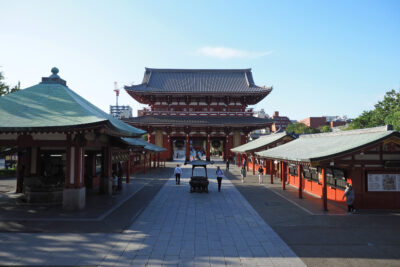
Photo credit: Taito City
Senso-ji, one of Tokyo’s oldest and most beloved temples, welcomes worshippers throughout the year. But as the year draws to a close, the temple takes on a special air of reverence and tranquility, filled with meaningful rituals and a sense of renewal.
Joya no Kane – The New Year’s Eve Bell
Every year on December 31st at midnight, Senso-ji holds the **Joya no Kane** ceremony, where the temple bell is struck 108 times. This Buddhist ritual symbolizes cleansing oneself of the 108 earthly desires said to trouble the human heart, allowing people to welcome the New Year with a purified mind.
The number 108 is often interpreted as representing human desires, though some traditions say it honors the 108 virtues of the bodhisattvas. Either way, the ringing of the bell is a symbolic act of reflection and renewal, widely recognized across Japan.
The event is open to the public and requires no reservation, but it draws large crowds. Visitors are encouraged to arrive early and dress warmly against the winter chill.
Tips for Visiting Senso-ji During the New Year Season
* **Crowd management:** Roads around the temple may be partially closed; public transport is highly recommended.
* **Cold weather precautions:** Late-night temperatures can be severe—bring warm clothing, gloves, and hand warmers.
* **Safety:** Plan your route in advance and keep personal belongings secure in crowded areas.
Preparing for Hatsumode – The First Shrine Visit of the Year
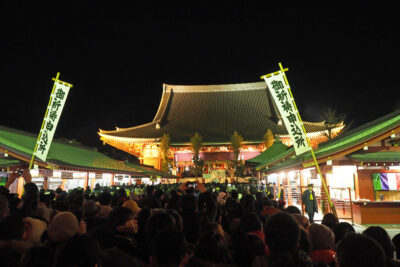
Photo credit: Taito City
Preparations for **Hatsumode**, the first visit to a temple or shrine in the New Year, begin in late December at Senso-ji. The temple grounds are decorated with **kadomatsu** (pine gate ornaments) and lanterns, and food stalls begin to line the approach. Visitors can already feel the festive atmosphere even before New Year’s Eve.
The Hagoita Market – A Dazzling Year-End Tradition
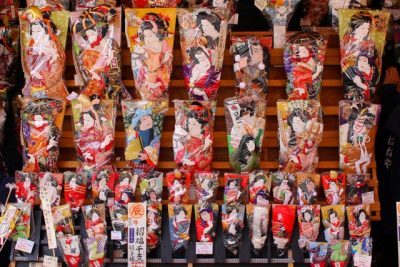
From **December 17th to 19th**, Senso-ji hosts the **Hagoita Market**, a colorful annual fair dating back to the Edo period.
Originally used for a traditional game similar to badminton, **hagoita** paddles are now popular as lucky charms and decorative items. The market features beautifully crafted paddles adorned with kabuki actors, celebrities, and even anime characters—making them sought-after souvenirs among locals and tourists alike.
Around Senso-ji, streets such as **Nakamise-dori** and **Denboin-dori** overflow with festive stalls selling good-luck items like bamboo rakes (kumade), New Year wreaths, and zodiac ornaments. Watching locals prepare for the coming year offers a wonderful glimpse into authentic Japanese culture.
Taste the Flavors of Asakusa at Year’s End: Soba and Amazake
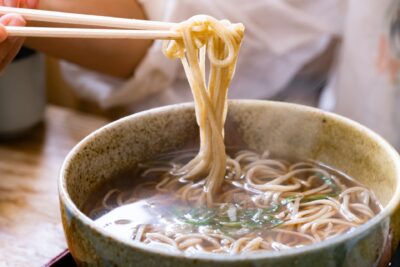
A beloved Japanese custom on New Year’s Eve is to eat **toshikoshi soba**—buckwheat noodles symbolizing longevity and renewal. In Asakusa, many restaurants serve traditional soba dishes, from hand-ground buckwheat noodles and tempura soba to flavorful curry soba. Some restaurants even offer full soba course meals, often available by reservation. Expect crowds, and plan to dine early if possible.
As the night of December 31st deepens, the streets around Senso-ji fill with **food stalls** offering comforting winter favorites: warm **amazake** (sweet rice drink), miso soup with pork, yakisoba, grilled skewers, and baby castella cakes. These stalls line Nakamise-dori and the temple grounds—perfect for a quick snack between temple visits.
> Tip: Bring cash, as most stalls don’t accept cards, and dress warmly for the chilly late-night air.
Suggested Itinerary: Spending the Last Day of the Year in Asakusa
Morning – Experience the Peace of Senso-ji
Start your day with an early temple visit to avoid the crowds. Draw an **omikuji** (fortune slip)—available in English—and browse the variety of **omamori** (amulets) for health, love, safety, and success. Take your time to appreciate the temple’s historic architecture, including the Main Hall, the Five-Story Pagoda, and the iconic Kaminarimon Gate.
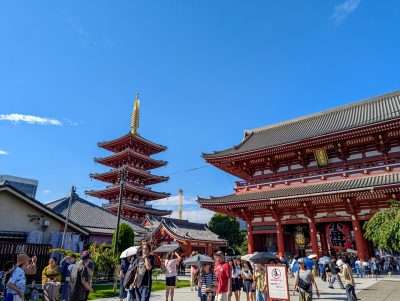
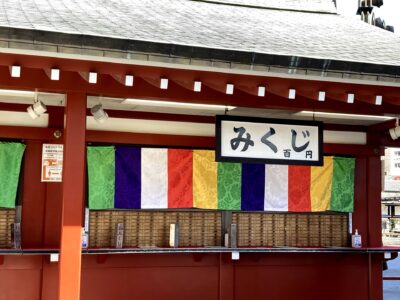
Afternoon – Stroll Through the Hagoita Market
Wander through the temple grounds and nearby streets to admire the intricate good-luck items and enjoy taking photos in the vibrant market atmosphere.
Evening – Enjoy the Sunset Along the Sumida River
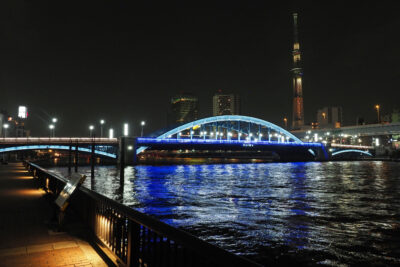
Photo credit: Taito City
The view of the **Tokyo Skytree** framed by the winter sunset over the **Sumida River** is breathtaking. Relax at a riverside café with a warm drink as the lights begin to twinkle.
Night – Welcome the New Year with Soba
As night falls, join the locals in enjoying **toshikoshi soba** at one of Asakusa’s many soba shops—many stay open late into the night. To avoid the rush, check hours in advance or opt for takeout if available.
Recommended Hotel for Asakusa Sightseeing THE KANZASHI TOKYO ASAKUSA
THE KANZASHI TOKYO ASAKUSA
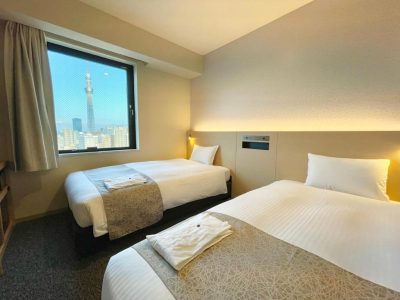
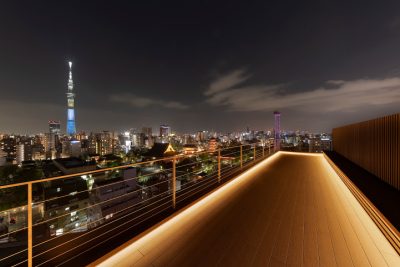
Location: Just behind Senso-ji Temple, about a 10-minute walk from Ginza Line’s Asakusa Station.
Features: Situated in the quiet Kannon-ura area, making it convenient for sightseeing.
Amenities: Modern guest rooms, a rooftop terrace with panoramic views of Asakusa, and free Wi-Fi.
Highlights: Walking distance to Senso-ji and Nakamise Street. Direct Ginza Line access to the city center.

In Summary: A Special Year-End Experience Only in Asakusa
Asakusa is one of the best places in Tokyo to experience Japan’s year-end and New Year traditions. From the solemn ringing of Senso-ji’s bell and the lively Hagoita Market to the comforting warmth of soba and amazake, every moment is filled with meaning and cultural beauty.
In this season where stillness meets celebration, let Asakusa offer you a truly memorable way to welcome the New Year.
